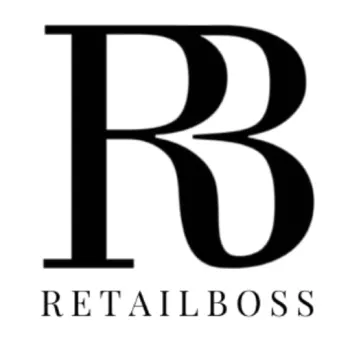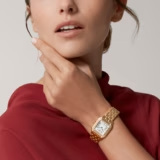The beauty industry is getting its biggest tech makeover yet. L’Oréal, the world’s largest beauty company, has just announced a groundbreaking partnership with NVIDIA that could reshape the future of the beauty industry. Revealed at the “New Frontiers of Beauty” press conference during Viva Technology in Paris, this alliance aims to infuse generative AI into every aspect of L’Oréal’s operations, from product development to marketing and consumer services. The move signals a new era of hyper-personalized beauty experiences, rapid innovation, and digital transformation at a scale never seen before.
The Heart of the Alliance
Central to this collaboration is NVIDIA AI Enterprise, the company’s comprehensive generative-AI platform. L’Oréal is integrating this technology into its proprietary CreAItech engine, enabling the creation of photorealistic 3-D assets for every product in its vast portfolio. These assets can be instantly adapted into thousands of localized advertisements, e-commerce images, and digital content pieces, tasks that once took weeks now accomplished in mere minutes. This leap in efficiency not only streamlines L’Oréal’s creative process but also ensures brand consistency and compliance across global markets.
Voices Behind the Vision
Asmita Dubey, Chief Digital and Marketing Officer at L’Oréal, described the partnership as a catalyst for creativity and consumer engagement:
“Our focus is to drive unparalleled consumer engagement, with both creativity and technology, as transformative technologies such as gen AI & agentic AI redefine our consumer expectations,” said Asmita Dubey.
She further emphasized the company’s ambition:
“We are incredibly excited to collaborate with NVIDIA to leverage AI’s potential, in order to augment creativity, and to help turn consumers’ beauty dreams into reality,” said Asmita Dubey.
Azita Martin, NVIDIA’s Retail & CPG lead, pointed out the enterprise benefits:
“Generative AI is bringing digital intelligence and agility to enterprises. By leveraging NVIDIA AI Enterprise, L’Oréal is bringing rapid innovation, scalability, personalized marketing and advertising that improve consumer engagement and conversion,” said Azita Martin.
She also highlighted the direct impact on consumers:
“L’Oréal, along with NVIDIA is unlocking the full potential of AI in beauty, and make consumer beauty experiences even more seamless, rewarding and fun,” said Azita Martin.
What’s Rolling Out First? CreAItech, Noli, and Beauty Genius
- CreAItech: L’Oréal’s internal content engine will now use NVIDIA’s technology to mass-render 3-D product images, shade variations, and animations. These assets will feed directly into platforms like TikTok, Instagram, and online retail, dramatically accelerating content creation.
- Noli (“No One Like I”): This AI-native multi-brand marketplace will feature an “AI Refinery” developed with NVIDIA and Accenture. The cloud-based pipeline will allow Noli to rapidly test new diagnostic tools, matchmaking algorithms, and merchandising strategies, enabling agile, data-driven improvements in real time.
- Beauty Genius: L’Oréal Paris’ generative-AI assistant offers personalized beauty routines, AR try-ons, and 24/7 support. With enhanced access to 3-D assets and faster AI model updates, Beauty Genius aims to reduce decision fatigue for the 70% of consumers overwhelmed by product choices.
Industry Implications: A New Benchmark
While generative AI in beauty has mostly focused on content creation and virtual try-ons, L’Oréal’s partnership with NVIDIA pushes the envelope further. The company is already developing a foundation model to predict ingredient interactions, potentially reducing waste in product labs and accelerating the development of new formulas. This approach could shorten time-to-market for new products and reduce environmental impact, a win for both business and sustainability.
Competitors are also moving fast. Estée Lauder is integrating Adobe Firefly into its campaign production, and Unilever is experimenting with AI-powered scalp diagnostics for personalized hair care. However, L’Oréal’s comprehensive, end-to-end adoption of AI from R&D to consumer experience sets a new industry standard that others will struggle to match.
What to Watch
- Regulatory Challenges: As AI moves from marketing to product formulation, regulators in the EU and US will demand greater transparency, safety, and fairness. L’Oréal’s proactive compliance gives it an edge, but ongoing vigilance will be essential.
- Creator Ecosystems: NVIDIA’s Omniverse could enable makeup artists and influencers to co-create official product visuals, blurring the lines between user-generated content and brand assets.
- AI-Native Brands: Lower barriers to entry mean new beauty brands could launch using only data, algorithms, and contract manufacturing, potentially disrupting the industry’s traditional giants.
The Bottom Line
Combining L’Oréal‘s legacy of beauty innovation with NVIDIA’s generative-AI expertise, the beauty conglomerate is building a vertically integrated digital pipeline that could leave slower competitors behind. If the company delivers on its vision, the old playbook of seasonal launches and static campaigns may soon be obsolete. For the rest of the industry, the message is clear: embrace AI or risk being left in the past.

















